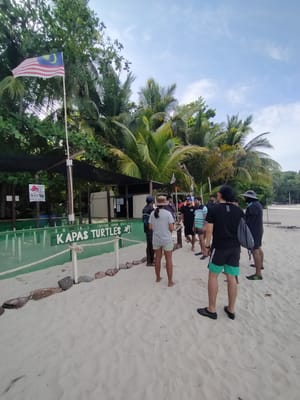WITH ECOTOURISM BEING a popular focus for the modern traveller, it’s not too unfamiliar or uncommon to see travel businesses pursuing partnerships with wildlife conservation bodies or vice versa. The most common in Malaysia are marine conservation programmes, in which hoteliers and tourists can get involved or visit conservation or research sites. Many revolve around sea turtle conservation work at turtle nesting areas. With several years working in the ecotourism sector, I’ve been able to witness how conservation groups operate and work extensively on their sites, learning how research groups like MareCet and Lang Tengah Turtle Watch (now known as PULIHARA) collect data while running physically demanding work, engaging marine mammals and sea turtles. The one thing that always stood out was the need to form strong synergies with hoteliers within their research area—to ensure their work can be sustained through tourism support.

Previous Post
An Indian from China Street: A Lasting Reality
5 min read
THERE WERE ONLY three Indian families living on Penang’s China Street in the 1960s. And of course, no Malays…
by
Balakrishnan Narayanan
Next Post
Mariophile: The Early Days of the Estate and Country Retreat of the College General
11 min read
THE COLLEGE GENERAL, off Jalan Cengal, is a venerable Catholic seminary emphasising a prayerful and secluded life for its students—…
You might also like
Dried Fish: A Luxury Born of Necessity
4 min read
Ikan bulu ayam, gelama tengkerong and ikan gelama tiga gigi are fish species usually dried because they are too bony to be worth cooking. Salt, which gives dried fish its distinctive flavour, is used in abundance for its antibacterial properties.
Revisiting Challenges in Conserving George Town’s Heritage Buildings
5 min read
Implementing conservation standards and monitoring mechanisms to conserve George Town’s heritage buildings remain complex, even after 17 years since its UNESCO inscription in 2008.
Tracing the Taste of Thailand in Penang’s Kitchens
7 min read
Penang’s proximity to Kedah and the long history of cross-border marriages and trade brought Thai culinary traditions southward, introducing the intense, spicy-sour palate that still defines much of northern Malaysian food today.




